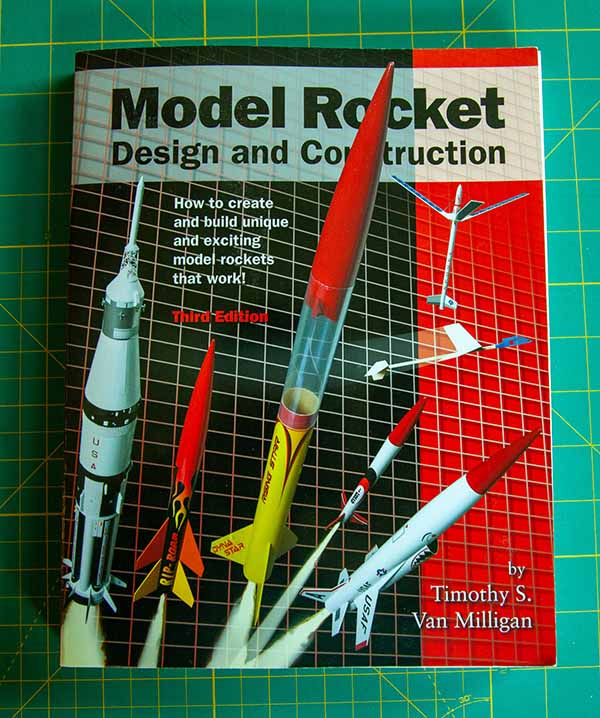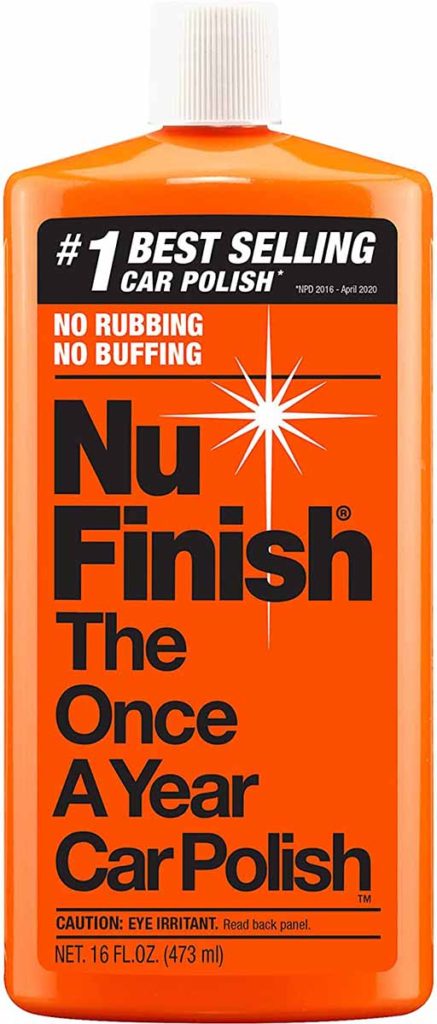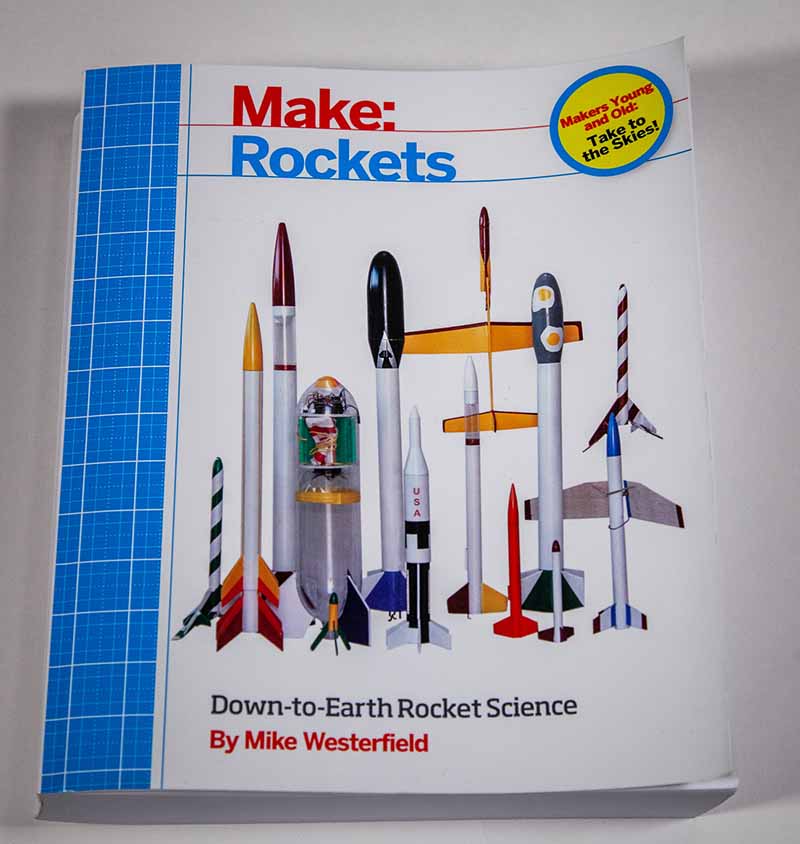
Last week my son asked me how high a rocket can fly. As I went on my deep dive and explored just how high low-powered rockets can go, I started to ask myself another question. How can I make my own rockets fly higher?
While I’m not a super competitive guy, it got me thinking. Maybe we can Dude Perfect an activity and see who can launch their rocket the highest!
Generally, to increase a rocket’s altitude you must decrease drag and weight while increasing thrust. Making a high-flying rocket is a balancing act of all three factors. Unless you build a rocket from scratch, the biggest changes you can make are decreasing drag and choosing the right engine.
Let’s take a look at how you can significantly reduce drag and how you can choose the right engine for your rocket.
Drag
Trigger alert: we’re about to get academic. Here’s NASA’s explanation of drag: “We can think of drag as aerodynamic resistance to the motion of the object through the fluid. This source of drag depends on the shape of the rocket and is called form drag. As air flows around a body, the local velocity and pressure are changed.” (https://www.grc.nasa.gov/www/k-12/rocket/rktaero.html)
You can get super technical and academic about this (considering you can get advanced university degrees in aeronautical engineering), but I’m going to keep things simple and practical (mostly because I’m no aeronautical engineer…). The drag of a rocket is ultimately determined not so much about the surface area of the rocket, but the surface area that is in contact with air (what NASA identifies as a fluid) as the rocket travels.
If we want to make our rocket fly higher, we have to find ways to make it have as little drag as possible.
Rocket Fin Design and Reducing Drag
Now, if you plan to scratch-build your own rocket and plan to design it yourself, first off, kudos to you. Second, if you haven’t already, buy a flight simulator program like Rocksim to test your designs. (This is not an affiliate link and I have no connection to Apogee Components. They just have great information.) If you plan to design rockets, there is no getting around a good rocket simulator program, and Rocksim is the go-to program.
The ideal theoretical shape for a low-powered rocket fin is an elliptical shape. If you want to nerd out and read all about this, check out Tim Van Milligan’s article in his Peak of Flight Newsletter No. 442. He’s super smart and gets much more technical. I’m not, so I just give you the answer.

While this is the best shape theoretically, the best practical shape for a small, low-powered rocket is actually a rectangle or parallelogram (if you forgot your high school geometry, a parallelogram is a rectangle, but tilted sideways). I’m not going to get into the science of this, but because we don’t live in a vacuum and circumstances are never perfect, this accounts for any wind and what a rocket needs to correct itself and fly straight again (It gets super technical and deals with something called a Reynold’s Number. Check out this article here if you’re interested in nerding out).

If you want to get really into the technical side of model rocket design, check out Tim’s book, Model Rocket Design and Construction. I usually recommend Make: Rockets by Mike Westerfield because it’s more up to date (the third and newest edition of Tim’s book was published in 2008). That being said, the fundamental engineering principals in Tim’s book stand the test of time, and it is definitely worth getting if you’re interested in building and designing your own model rockets.
Chances are though, you’re more likely going to take a kit rocket and want to make it as efficient and aerodynamic as you can make it. The biggest thing you can do to improve what comes in the kit is to sand an airfoil into the balsa fins.
You have two choices when sanding your fins. The first is to sand the fin so it has a tear-drop airfoil (the top of the fin, the part that faces up during launch being the thickest, and the side facing the ground the tip of the tear-drop).

After you attach your fins to the body tube, take some of that wood glue, and apply some along the edge where the fin meets the rocket. Use the tip of your finger and lightly smooth out the glue line. This will add a light fillet and further reduce drag.
Launch Lug and Drag
It might seem trivial, but that little straw-like tube glued to the side of your rocket that you use for takeoff creates quite a bit of drag. The best way to reduce drag is to get rid of it completely. Unless you decided to buy/build a Launch Tower (around $200 at Apogee Components. Not likely worth buying unless you’re going to start a rocketry club) or plan to buy/build some other contraption to release the launch lug at take-off (Apogee makes Fly-Away Rail Guides), we’re just going to have to deal with a launch lug. The simplest option is to streamline the launch lug by cutting 45 degree angles on the ends.
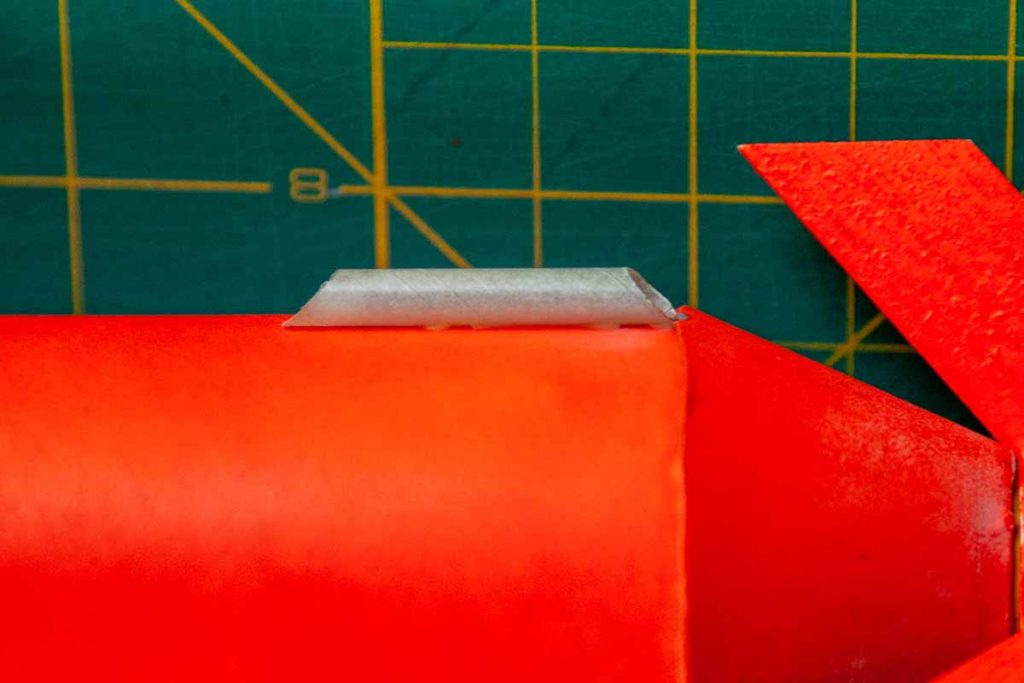
How to Apply a High Altitude Finish to a Model Rocket
If you want to take things to the next level and really reduce drag, you’re going to need to give your rocket a polished paint job. Simulations between a regular matte finish versus a polished finish show a 14% difference in altitude. That’s a pretty big deal.
Start by painting the entire rocket with a good quality sand-able spray primer. You can find this at a car parts store (it’s usually marketed as an automotive primer). It’s a bit pricey, but since rockets have such small surface area, a can will last you a long time.
When the paint is completely dry, sand the whole rocket. You’ll probably see through to the original finish the first time you sand. Repeat this process a couple more times until the rocket is perfectly smooth.
Paint the entire rocket with several lighter coats of an enamel paint (I like something bright to make it easier to see). Because there is usually a bump where different paint colors meet (which therefore creates drag), painting the whole rocket a single color will give it a much smoother finish, creating less overall drag.
Lightly spray the whole rocket with 2-3 coats of clear enamel paint. Once it’s completely dry, lightly wet-sand the entire finish using a succession of 800, 1000, 1200, and 1500 grit sandpaper (this is some next-level finishing!).
You’ll probably still see some micro scratches on the finish, and if you left it there, it’s still going to be considerably more aerodynamic than what we started with. But if we’ve gone this far, what’s a little more?
Buff the whole rocket with some Nu-Finish Car Polish, and gently rub out those micro-scratches. You can even use a fiber head/buffing attachment with a Dremel to make buffing easier.
Now add a light coat of car wax and buff it to a perfectly smooth finish. This is pretty extra, but your rocket is going to slip through the air like none other!
Engine Selection for a High-Flying Rocket
I won’t get super into rocket engines here (I’ve written a lot more about them in How to Choose a Model Rocket Engine), but we will have to get into a little bit of the basics. If you want to fly higher, you’re going to want more thrust, so you want to get an engine in your size (the size of your rocket) with the highest Total Impulse.
When you look at the code on a model rocket engine, the first letter identifies the Total Impulse. The higher the letter, the higher to Total impulse.
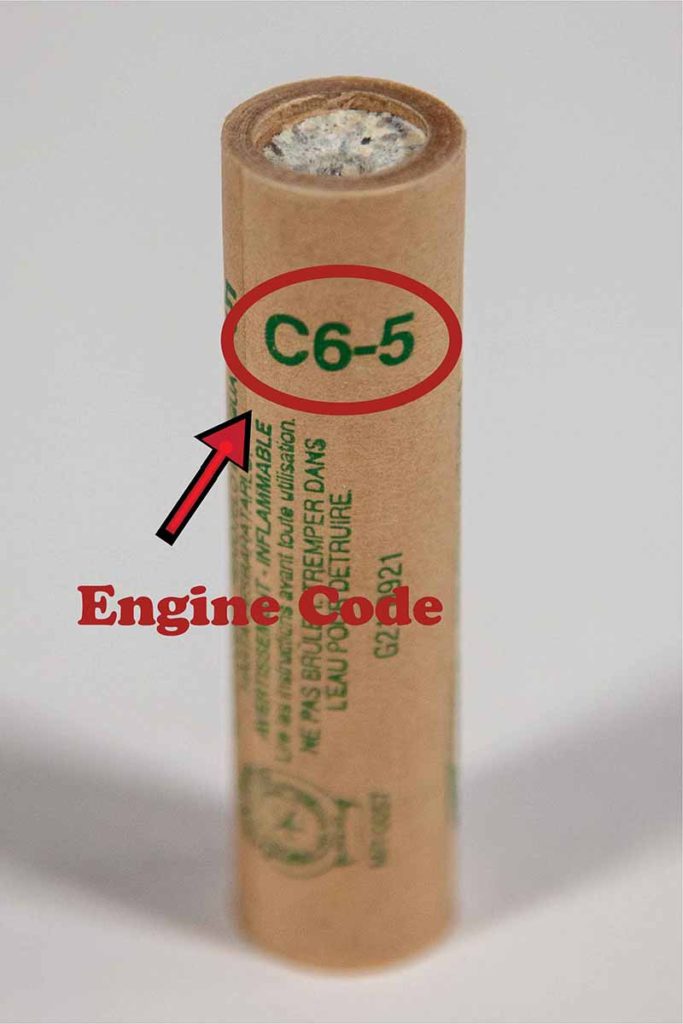
The first number right after the letter identifies to the average impulse. While you might think a higher number is best, a lower number might be better. A lower average can sometimes mean a longer burn time. Estes make a handy chart that tells you the total burn time of their rockets.
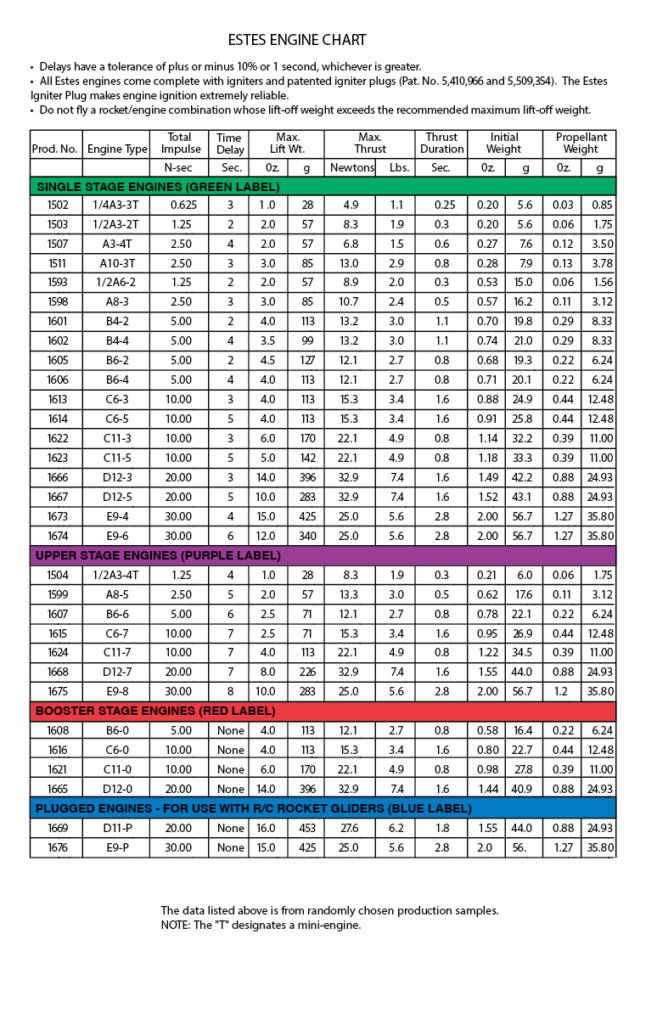
Finally, the last number means how long until the ejection charge goes off, releasing your parachute or streamer. If your rocket is from a kit, pick the recommended rocket engine which has the highest number. If you have a fast-flying rocket, an extra second or two before that charge can make a difference (not a huge one, but a difference none the less).
If you’re designing your own rocket, you can take more liberties with your design. So while you’re at it, why not add a booster? You’ll need to design and build a booster attachment (which might change your center of gravity and center of pressure), but if you’re designing and building a rocket from scratch, why not?
Adding a booster can make a huge difference as you now get to add a second engine and almost double your total burn time. Estes sells a rocket called the Majestic that can fly up to 2,000 feet. With the booster attachment, that same rocket can fly up to 3,000 feet!
(Friendly) Competition with High Flying Rockets
The fun part of making a rocket fly as high as possible is not necessarily to put on the most powerful motor possible and see it fly into the stratosphere (ultimately losing it), but to see who can fly the highest with a lower-power engine (see how to measure the height of your launch here). I mean, what kid doesn’t want to take on dad in a competition? (And let’s be honest, it’s a bit cathartic as a parent to put our kids in their place and just stuff that jump shot into the neighbor’s yard.)
So why not make a bit of a competition out of it (or if you’re not the competitive type, make it more of an experiment)? See just how high you can fly your rocket. Some of these kits are so cheap, you can build two or three and test out the difference in altitude with a single spray paint finish versus a high-polish finish. Experiment to see how much of a difference sanding the fins makes.
Before your know it, your kids are learning something (shhhh…. don’t let them know), and you’re having a good time building and launching rockets!
Diving Deeper into Model Rocketry
If you find yourself getting seriously into rocketry and you want to learn more, check out Make: Rockets by Mike Westerfield. Make is an awesome resource for so many things STEM-related and this book will give you everything you need to know about low-powered rocketry including compressed air and water rockets.
This book is no-joke and is about 1½ inches thick. This book has become my rocket bible and is a great resource (and no, Make did not ask me to say any of this).
Recent Posts
Flying rockets is super fun. My kids and I have a blast launching them into the sky and chasing them down. We love the idea of putting in a stronger engine each time and seeing how high we can...
The day has come. You bought your rocket kit, got it all glued up, painted, and ready to go. You’re now an expert on rocket engines (mostly because you read all about them here), you bought...

